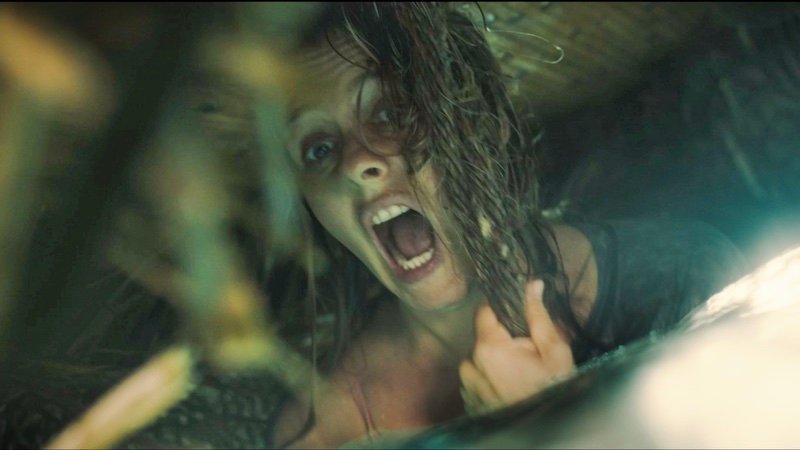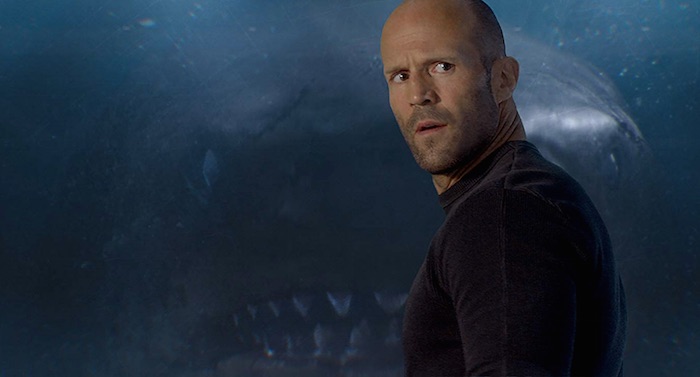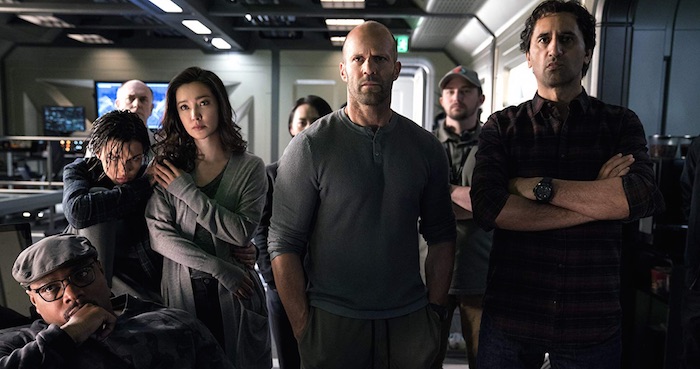THE REQUIN
 Wednesday, February 2, 2022 at 7:47PM
Wednesday, February 2, 2022 at 7:47PM
Stars: Alicia Silverstone, James Tupper, Deirdre O’Connell, Jennifer Mudge, Kha Mai and Danny Chung.
Writer/Director: Le-Van Kiet
Rating: ★ ★ ½

If you’re a stickler for detail (for the sake of this logically care-free film, I hope you’re not), the title should read ‘Le Requin’ - the full French pronunciation of ‘The Shark’. But why give an American film a French title? Or half-a-French title, for that matter? And why call it The Requin or Le Requin or The Shark at all…and then not shark-up for over an hour?
Which is not to imply that married couple Jaelyn (Alicia Silverstone) and Kyle (James Tupper) spend the first 60-odd minutes just being touristy (although they do that, too); they are recovering from their own watery tragedy, having lost a child during a home birth. Jaelyn has serious PTSD, especially on or near water, leading Kyle at one point to surmise that their seaside, tropical island suite was maybe not the best idea for a getaway-from-it-all destination.
It is off-season, which means monsoons, and soon their floating villa is ripped from its moorings and cast out to sea. While the dread of deep-sea predation is always present (unlike any form of rescue craft), it is the elements that pose the greatest threat. Jaelyn and Kyle go through the various stages of existential turmoil one would experience on a raft that was once your bedroom floor - panic, mostly, some bleeding, then accidentally setting fire to your bedroom-raft.
Tupper does all he needs to do on-screen as the wounded husband, but it is 90s it-girl Silverstone who leaves nothing on the acting table as Jaelyn. In partnership with her unmistakable stunt stand-in, she gets to go head-to-snout with sharks of various sizes in water depths prone to change mid-shot. Silverstone brings physicality and a great set of lungs to the more brutal moments, while capturing the grief and sadness of Jaelyn’s emotional ruin in small but effective scenes. It’s good seeing her back in a lead role, even if she gives more than the material deserves.

The alpha predator at the centre of the action is Carcharodon carcharias, or The Great White Shark. They don’t typically live in the tropical waters off the Vietnamese coast (tiger sharks and various breeds of reef sharks populate these regions), but we’ll let that slide. Spielberg did such a job on the shark’s image back in ‘75, flashing a close-up of that black eye (”like a doll’s eye”) is still the perfect cinematic shorthand for terror. The film does little else to earn it’s own sense of dread (unlike 2003’s Open Water or 2010’s The Reef) or provide the creature with some dimensionality (like 2016’s The Shallows), but as the latest sharksploitation riff, it works well enough.
The Requin is Vietnamese director Le Van-Kiet dipping his toe (no pun intended) into the Hollywood industrial complex, after making a big splash (meant that one) with his 2019 festival hit, Furie, which was a great film. Aside from a few stock footage inserts of Hanoi streets and underwater wonderlands, his drama is staged in the tank space and against the green-screens of Universal Studios in Orlando. The ‘uncanny valley’ downside of CGI used to create that with which we are familiar takes a chunk out of key moments of suspense - the shark footage waivers from fleetingly convincing to…less so - but by minute 80, Kiet knows that his audience is in for les penny, in for les pound.
 B-Movies,
B-Movies,  Shark Attack,
Shark Attack,  horror
horror 


